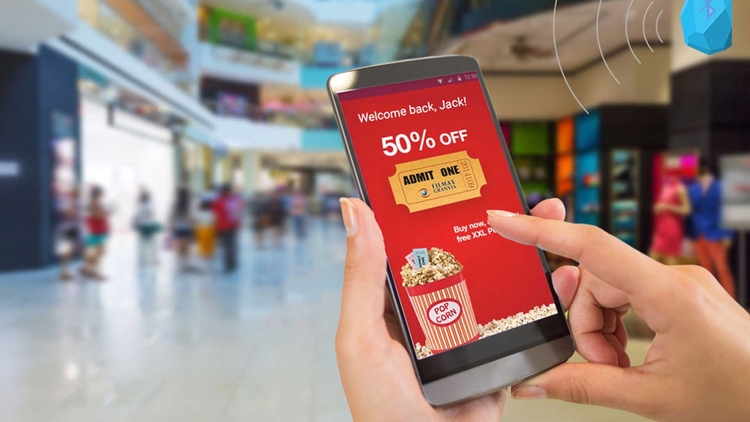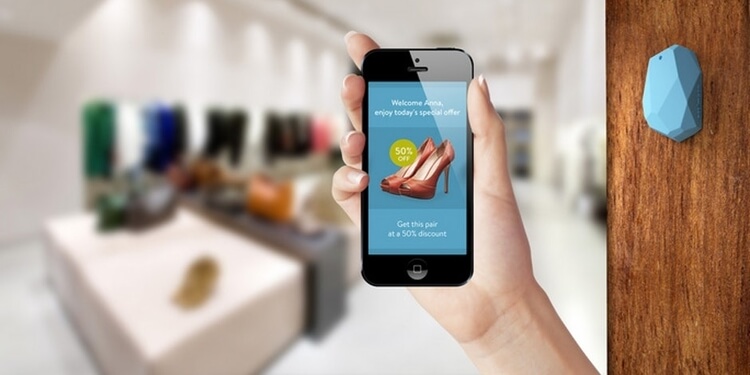Finding the right marketing strategy for your business is a difficult decision. A successful marketing strategy is not only one that helps you grow rapidly but also opens new doors and opportunities. The location-based advertising market is projected to grow by over $80 billion between 2021 and 2025.
The fast growth can be attributed to the increased number of businesses embracing the marketing strategy as they seek more personalised ways of interacting with their customers. The refining and wide availability of geospatial data technology have also helped fuel the adoption of location-based marketing.
When properly utilised, location-based marketing can be very effective at driving footfall for your business and will improve your marketing ROI.
Although the idea of location-based marketing can sound intimidating when new to it, the strategy is easier to implement than it might sound. Businesses must understand what the marketing strategy is about to leverage it effectively and take full advantage of its potential.

What is location-based marketing?
Location-based marketing is a marketing strategy that matches smartphone location data to the point of interest. The data received is used to create a location-based audience and serve them with the most relevant marketing content to increase conversion and improve customer experience.
The smartphone users need to have opted in by allowing sharing of their location, and usage of the data has to meet privacy compliance.
This marketing strategy is common in restaurants and shopping malls in the retail sector. For example, when you walk past a restaurant and get a pop-up message telling you about what they have on the day’s menu, that is some form of location-based marketing.
Types of location-based marketing
There are several ways of implementing location-based marketing. The right one will depend on the specific business type you run, and your target audience. Here are some of the most common location-based marketing types.
1. Geofencing
Geofencing is one of the best ways to implement location-based marketing if you run a physical store. This technique only entails creating a virtual 100-feet fence around your establishment. Also, geofencing is compatible with at least 92% of all smartphones currently in use.
With geofencing, customers are automatically targeted with promotional material once they get inside your virtual. Restaurants, supermarkets, and grocery stores are already using this form of location-based marketing to draw in more customers by targeting them with their latest offers and discounts.
Incentivising potential customers to walk into your store can significantly increase your footfall and sales.
2. Geo-targeting
Geo-targeting does not use real-time location data to target users like geofencing and instead relies on user location history. If your target audience has visited the place you are targeting before, they will see your ad.
With Geo-targeting, you get a broader base to reach out to since you can target the customers using their Zip code and at city and state levels. It can be a highly effective marketing strategy for promoting a new store location.
As a business, you need to keep track of the locations your potential customers are likely to visit and target them for an effective location-based marketing campaign.
2. Beacon marketing
Beacons are small physical devices that communicate with a nearby smartphone and other portable electronic devices via Bluetooth.
Beacons marketing entails installing beacons in your business and using them to pinpoint customer locations in real-time so that you can target them with push notifications.
Since they use Bluetooth technology, these devices can be handy for location-based marketing, even in areas with poor cell reception.
4. Proximity marketing
Proximity marketing works more like beacon marketing as it targets customers within a few feet of a specific spot.
Although this marketing can use beacons, there are also other implementation methods, such as QR codes and NFC (Near Field Communication).
You can put NFC tags and QR Codes on specific locations where the customers can see and scan them. Creating both is easy, but for QR codes you should use a reliable QR code generator.
5. Wi-Fi hotspot ads
Wi-Fi hotspots in public spaces like malls and town centres offer another excellent and unique opportunity for utilizing location-based marketing.
Public Wi-Fi in these spaces will allow retailers to market their products and services to the customers who use the internet.
For example, if a customer uses the Wi-Fi in the mall, they can be served ads from the retailers renting space in the mall or get meal offers from the eateries.
Location-based marketing benefits
More than 80% of marketers who use location-based marketing say that it positively impacts their business, leading to customer base growth and increasing customer engagement.
It is no brainer that location-based marketing can be a highly effective strategy for your business. But how does it benefit the company? Here is an overview of the main benefits of location-based marketing.

1. Low-cost rate
Location-based marketing requires a smaller investment to implement. Mobile devices are widely available, with the number of smartphone subscribers already surpassing the 6 billion mark, so it will not cost much to reach your target audience.
For some location-based marketing types like Geofencing, you will hardly have to spend anything as most of the tools you need are free. For others, like beacon marketing, the only significant cost will be buying the physical beacon devices.
2. Highly targeted marketing
Location-based marketing is highly targeted as you only focus on people at a specific location at a particular time. It eliminates the need to waste your marketing resources on broad-based marketing campaigns that are less effective.
With location-based marketing, you can quickly tell what your customers want and their shopping patterns. This information allows you to create more customised marketing products that will lead to higher conversion rates and help enhance customer loyalty. To further refine your marketing strategy and ensure you’re equipped with the best practices and tools, consider exploring demand generation tools essentials, which can provide you with additional insights and techniques to target your audience effectively.
3. Good quality lead generation
The targeted marketing that comes from location-based marketing strategies will help you generate good quality leads that are easier to convert.
Where people go helps you determine their genuine interests, unlike passive marketing data that only shows you what the potential customers consume based on their previous buying patterns.
Using location data allows you to target the potential customers when they are most active and are more likely to make a purchase.
For example, let’s say you run a restaurant and want to drive more footfall to try out a new menu item. Using location-based marketing allows you to target people that are more likely looking for a place to eat or trying to decide what to eat. These individuals are easier to convince to try your new dish since they are already searching for something to eat.
4. Convert customer impulses to actual sales
Customers already near your business premises often require a slight nudge to buy. They already desire to purchase but may still be undecided because they do not know what to expect.
For example, some can look at your store and assume that things are expensive there or you do not have what they want. A simple nudge with a message advertising your latest discounts or a catalog with what you have can be all that is required to convert these impulses into actual sales.
Proximity marketing is all about helping customers take the last step, and you can easily do this by addressing any concerns that prevent the customers from getting into your store.
5. Better customer connection and understanding
The data you get from location-based marketing comes straight from the customer’s mobile devices. Hence it will allow you to know your customers better, and you can use this information to improve customer reach with a more personalised marketing message.
Your business can also use the data to improve connection with your target audience to build more long-lasting relationships and customer loyalty.
Remember that up to 65% of your business will always come from existing customers, and so you should always strive to gain more loyal customers.
6. Market segmentation is easy
Location-based marketing makes market segmentation easy. Market segmentation is crucial for your marketing strategy as it makes it easy to keep track of your business’s performance and measure your ROI.
You can segment your target market based on demographic and geographic location with location-based marketing. Segmentation can be beneficial if your business has several branches, as it makes it easy to define and understand your specific target audience much better.
How to leverage location-based marketing?
Location-based marketing seems to be well on its way to being the cornerstone for most businesses’ marketing strategies. But, how exactly can you leverage the marketing strategy to drive footfall and improve ROI?
Increasing foot traffic
The ultimate goal of location-based marketing is to drive more people into your store. An increase in footfall also leads to an increase in conversion as it is easier to convince people to buy once they are inside your store.
You can increase foot traffic using clever and perfectly timed ads with a clear message on the discounts and offers. When this message pops up on your target audience’s smartphone, they will be curious to see what exactly you have to offer.
This translates to more people coming into your store. You can increase shop foot traffic without spending too much since location-based marketing can be highly economical. The lower marketing costs also help improve ROI for your marketing.
Improve user experience
Location-based marketing markets at a personal level, and the customers will always get personalised ads or at least something that is relevant to them based on their location.
Personalisation can be an excellent way to enhance the overall user experience by ensuring your potential customers do not have to interact with many irrelevant marketing messages.
Most customers expect brands to know them and their preferences as individuals and tailor the marketing message to suit their tastes. Therefore, it is clear that how the marketing message is presented to them greatly affects their overall experience and interaction with your brand.
Personalisation should not be a problem with location-based marketing, as it makes it easy to understand your customers better by keeping track of their movement and buying behaviour.
Collect highly relevant insights
Information is an essential resource in marketing. Your business cannot succeed in selling to your target audience if you do not have enough information about them.
The holistic nature of location-based marketing makes it highly valuable for collecting relevant customer data. Besides just presenting customers with the right message, you can use this strategy to gather important customer data such as their age, food preferences, favorite places, and travel patterns. You can leverage these rich and relevant insights to improve footfall and boost returns from your campaigns as you know exactly how to package your marketing message.
Increase business revenue
Location marketing has been proven to increase business revenue significantly. You can use this marketing strategy to remove barriers to sales. It is easy to convince customers to buy once they are inside your store, which is crucial for increasing business revenue.
Also, by improving a consumer’s shopping experience, you can help drive up your revenue. For example, some innovative brands like IKEA will use location-based marketing to send customers welcome messages and remind them of their live discounts. This strategy has been highly effective at increasing revenue for IKEA, which is now one of the most valuable retailers globally.
Conclusion
Location-based marketing is just one small step in your business marketing journey. Still, it has a tremendous impact on your footfall and is highly effective at improving your marketing ROI.
There are several ways of implementing location-based marketing, from beacons to geo-fencing and geo-targeting. Regardless of which strategy you choose, it is essential to make sure you have a good plan from the start.
One more thing to keep in mind is that despite being effective, location-based marketing should not work in isolation as you still need to combine it with other marketing strategies for the best outcomes. See some smart examples of geofencing here.
Ready to increase your ROI with location-based technology?
Geofencing technology is a powerful and cost-effective way to drive sales for businesses both big and small. If you need help getting started with beacons and geofencing, or you want to find out more about how our platform can drive results for your business, contact PlotProjects today.
You can try our demo app for free, or download one of our customer’s apps to see how it works.

Akshay Deogiri
Akshay is a digital marketer and a startup enthusiast exploring the myriad avenues of everything marketing. At Beaconstac, he enables companies to bridge the gap between the physical and digital worlds through the use of custom QR codes.
